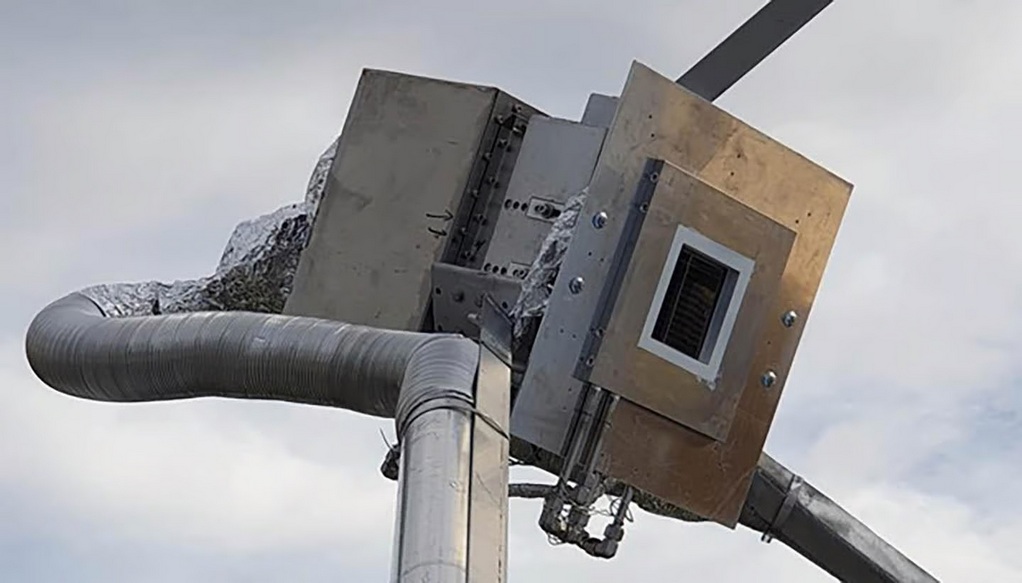Engineers at EPFL have built and tested a solar reactor that can generate hydrogen gas from sunlight and water. The system is not only highly efficient at producing hydrogen, it also captures the “waste” products of oxygen and heat to put them to use too.
Hydrogen is set to be a key player in renewable energy, and one of the most effective ways of producing it is by splitting water into its constituent molecules. When done using solar energy, this process is called artificial photosynthesis, and that’s the process this new reactor is tapping into.
The EPFL reactor looks like a satellite dish, and it works on a similar principle – the large curved surface area collects as much light as possible and concentrates it onto the small device suspended in the middle. In this case, the dish is collecting the heat from the Sun and focusing it by around 800 times onto a photoelectrochemical reactor. Water is pumped into this reactor, where the solar energy is used to split its molecules into hydrogen and oxygen.
The reactor also captures two waste products of the process that are usually just released – oxygen and heat. The oxygen could be handy for hospitals or industrial use, while the heat is passed through a heat exchanger and could be used to heat water or a building’s interior.
The reactor was tested on the EPFL campus over 13 days, in August 2020 and February and March 2021, to get a sense of how it worked in different weather conditions. Its solar-to-hydrogen efficiency was found to be over 20% on average, producing around 500 g (1.1 lb) of hydrogen per day. The team says that with this output, over a year the system could power 1.5 hydrogen fuel cell vehicles driving the average distance, or provide about half of the electricity demands of a four-person household.
“With an output power of over 2 kilowatts, we’ve cracked the 1-kilowatt ceiling for our pilot reactor while maintaining record-high efficiency for this large scale,” said Sophia Haussener, corresponding author of the study. “The hydrogen production rate achieved in this work represents a really encouraging step towards the commercial realization of this technology.”
The next step, the researchers say, is to build a demonstration plant of a few hundred kilowatts at a metal production facility, where the hydrogen will be used for metal annealing, the heat for hot water, and the oxygen collected for nearby hospitals.
Tags: EPFL, Gas, Hydrogen, Sunlight, Water



Recent Posts
Japan Launches Major R&D Project to Advance Shipbuilding with Alternative Fuels
EU Adopts Emissions Standards for Low Carbon Hydrogen to Bolster Clean Energy Market
Trafigura to Implement ZeroNorth’s AI Platform Across Global Fleet
Cochin Shipyard to Construct eCap Marine’s Hydrogen-Fuelled SeaShuttles for Samskip
India Strengthens Hydrogen Economy with Hyundai-IIT Madras Innovation Centre
India Showcases Green Maritime Ambitions at London Investment Meet
Hong Kong Launches Incentive Scheme to Promote Green Maritime Fuel Bunkering
MSC Hosts Sustainability Experience in Antwerp for Global Supply Chain Leaders